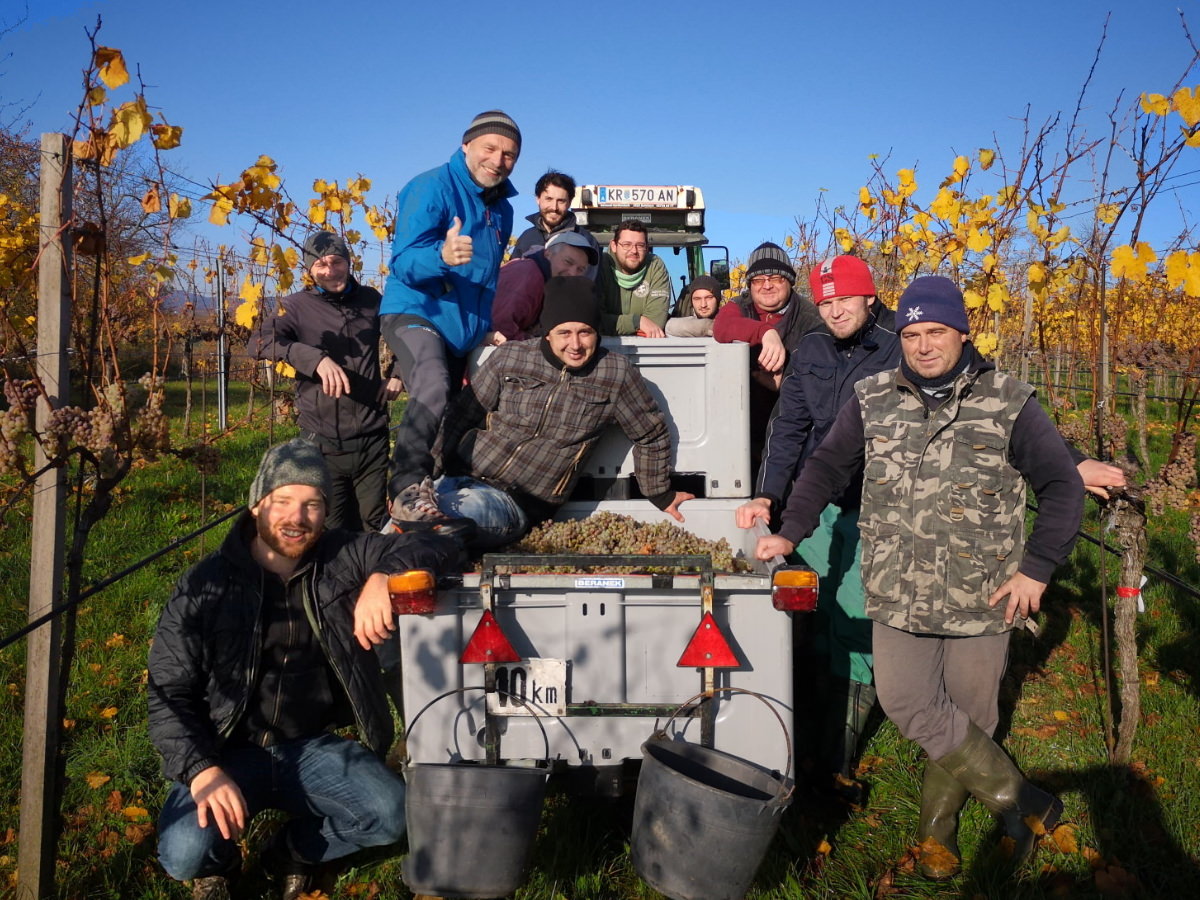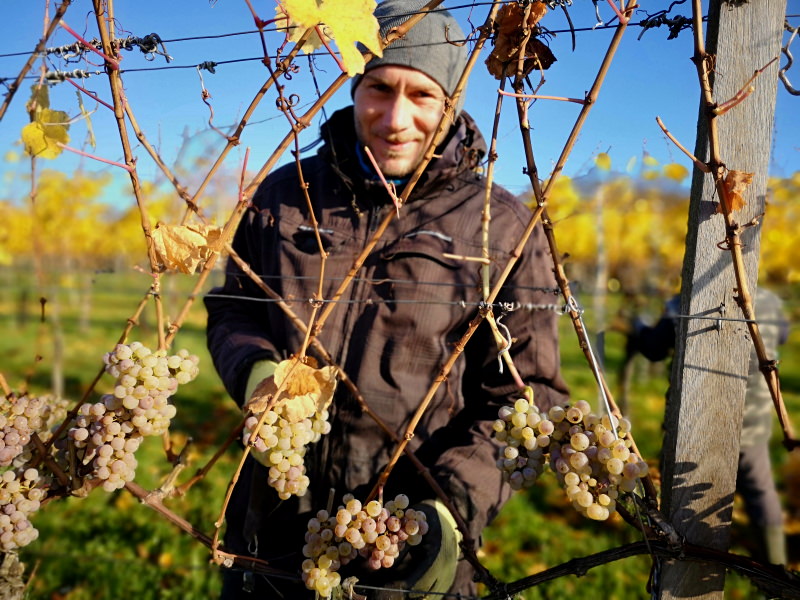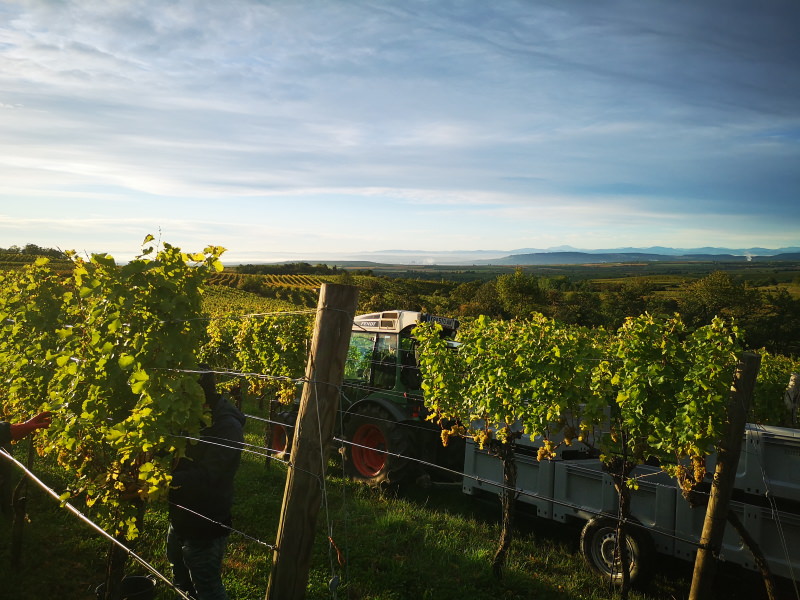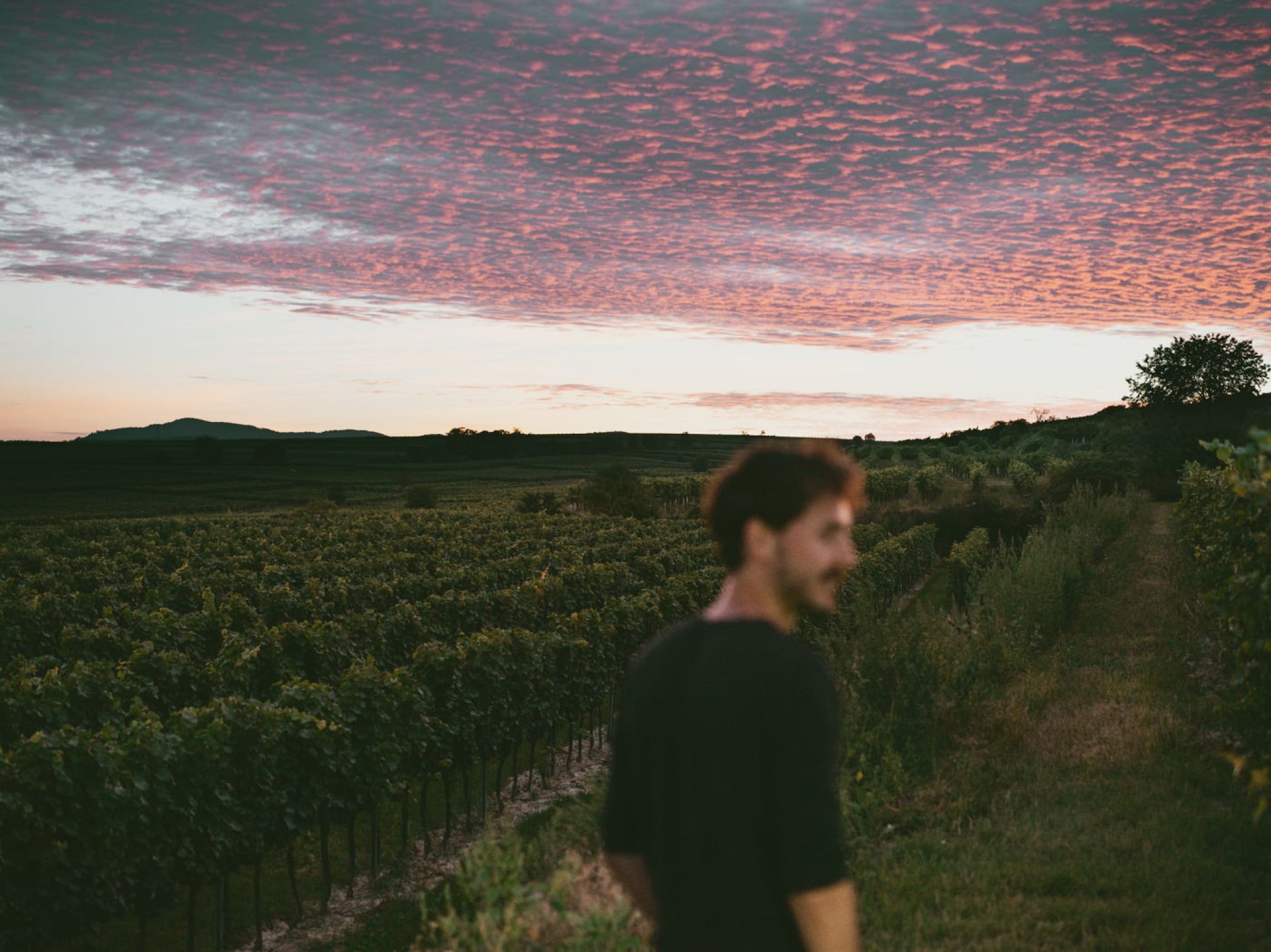Retrospective: Vintage 2020
2020 was good for some surprises. Suddenly the world was silent. Everything appeared different, or not? The earth kept turning. The winds kept blowing. Plenty of rain has fallen. The water shot through the sturdy vines and our grapes were peacefully ripening in the mild summer sun. To be honest, outside in nature everything just felt really good, even if we got a little wet in the end. Let us tell you more about the wine year 2020:
Winter
Where is winter? The year begins and temperatures are unusually mild. It is cold but anything but freezing outside. Even if we get hardly any snow, there is still sufficient rainfall. The often foggy sky brings around 65 liters of rain by the end of January. The mild and humid weather continues in February. Until the end of the month, precipitation is around 25% above the long-term average. Strong winds result in an increased evaporation rate, which partially offsets some of the rain. Pruning is going well. The vines are strong, therefore best conditions for the growth of the new shoots in spring are given. In the cellar we are preparing the first young wines from the previous vintage for bottling and take care of the numerous slow-fermenters. Tasting the great quality of the 2019's fills us with joy and thus further increases the motivation for the coming vintage.
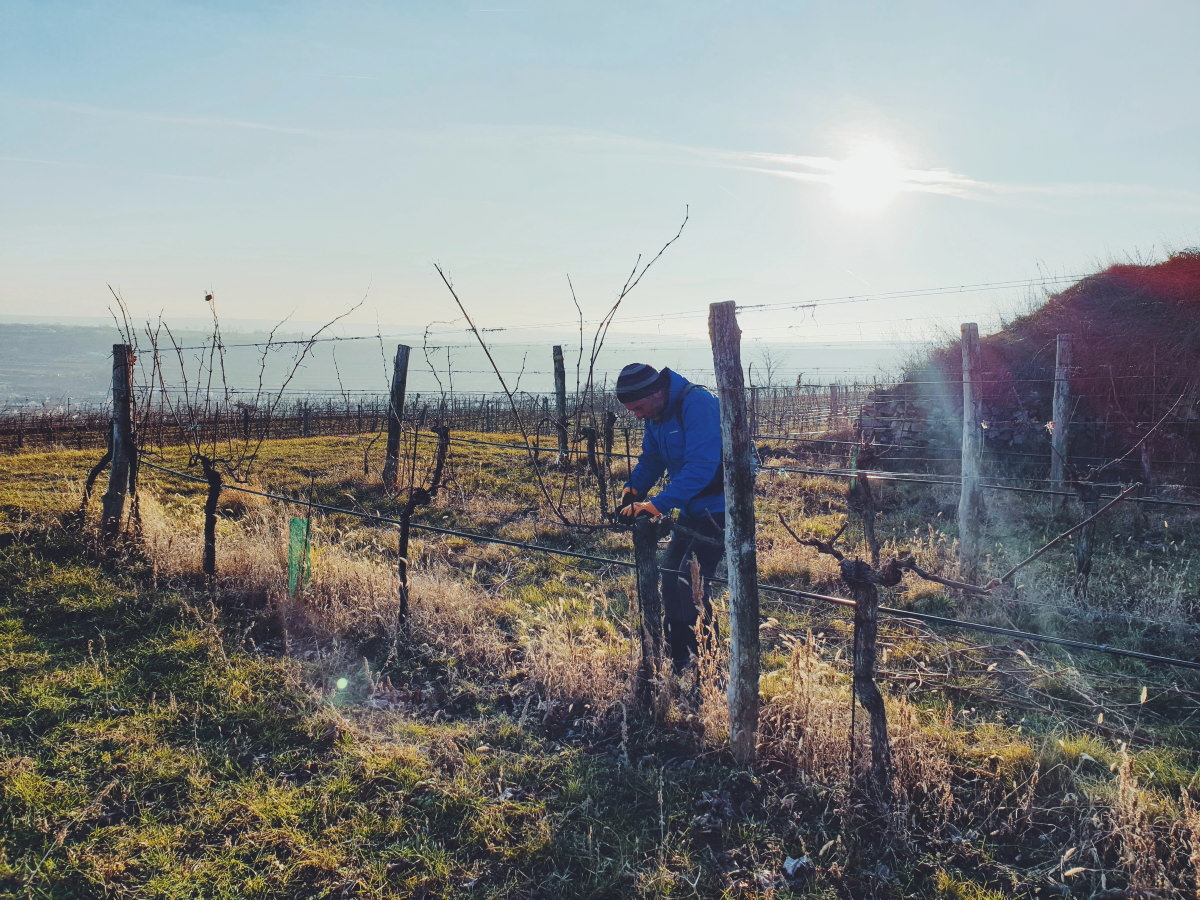
Spring
In March, spring is already waving at us and... suddenly a new virus takes over the world. Nobody expected that. The economy stands still, at the same time the madness of nature is beginning its next round. The weather is dry and in some cases very warm (up to 20°C). On March 9th, the apricot blossom begins in some places and gives an indication that the vines will sprout early. At the end of March the temperatures plummet below 0°C, a weather phase that lasts around 2 weeks and brings with it an acute risk of frost. For this reason, we have not yet tied down the vines to the wires in frost-endangered vineyards. As temperatures reach -3°C we unfortunately cannot avoid frost damage. Our apricots are gone too. In April the temperatures start rising again (25°C on Easter Sunday!). Like in the previous year, budbreak starts between April 12th and 17th, though very irregularly because of the previously frosty temperatures. Some shoots are already in the 5-leaf stadium at the end of April while other buds are only just opening. This will later become very noticeable during flowering and harvesting. Only a few rain clouds find their way to the Kamptal during this time. It's getting extremely dry.
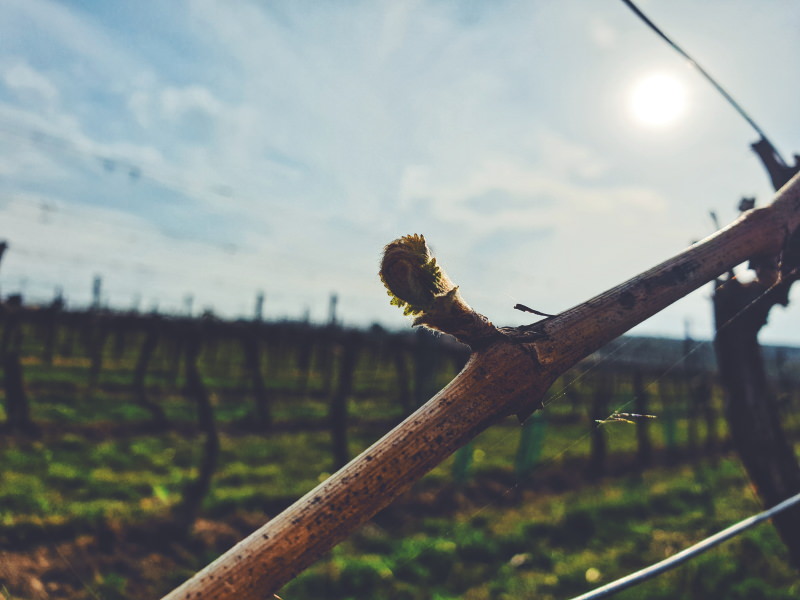

In May, nature pushes towards the light with lots of energy, converting every ray of sunshine and every raindrop in usual strength. The vines grow at a rapid pace. The canopy managment at this time of year is crucial. To build up a loose foliage strucutre, excess shoots are taken off. This gives the grapes enough space to keep their "minimum distance" and prevents "infection" from various fungal diseases. The wind can penetrate the canopy later in summer and dry (and cool) the grapes in the process. The spring drought gradually subsides. 60 liters of precipitation in May and 120 liters in June replenish the underground water reserves. The temperatures are moderate and fit into the long-term average.
We make use of the time we gained through the Corona counter-measures to tackle new projects. In mid-May we start the project: "Copper-free plant protection". For the first time we are protecting a small area exclusively with a mixture of herbal extracts, sulfur and rock-dust. We want to stimulate the plant's defense mechanisms in a natural way. The extract (consisting of basil, nettle, thyme, blackberry, yarrow, etc.) makes the regulatory mechanisms of nature usable for us. A positive milieu of microorganisms colonizes the plants and displaces fungi and other pathogens. An exciting concept that we are determined to implement. The results exceed all expectations . The vines and grapes remain healthy at all times. At the same time this seems to be an extremely gentle method for the vineyard's ecosystem. We make the decision to convert our entire area in the coming years. Doing so, we want to continue to implement our idea of regenerative and natural viticulture in the best possible way .
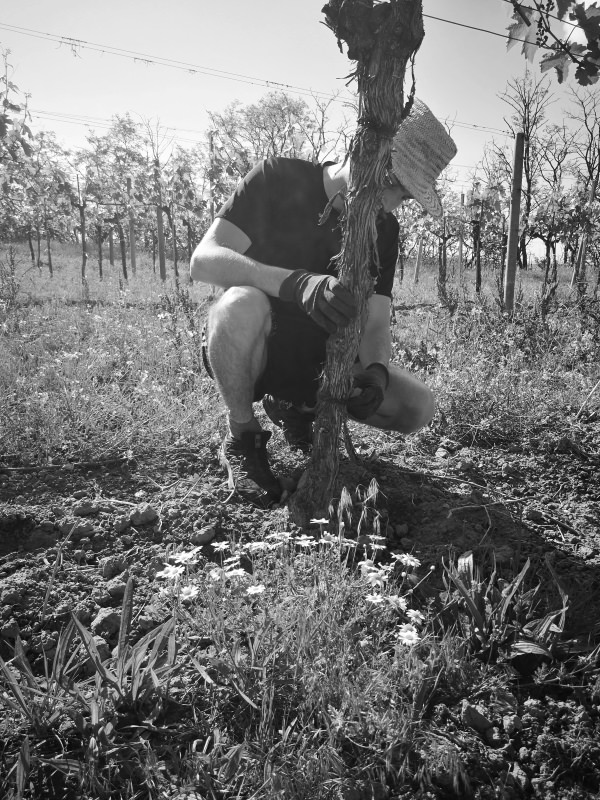

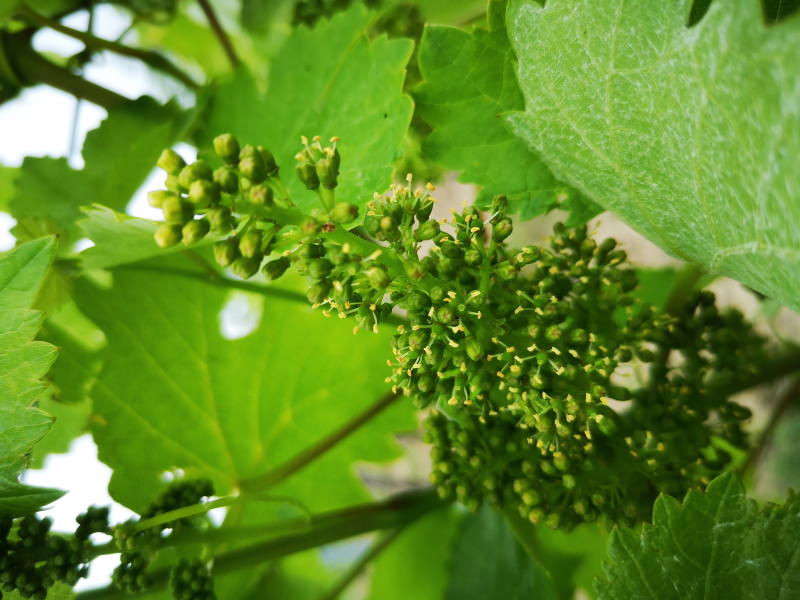
Summer
Even in July and August temperatures remain pleasantly mild. What a wonderfully green summer! And definitely a blessing for nature, which has suffered from the dry weather of the past 3 years. It's raining a lot. Almost 250 liters of precipitation in both months, which is well above the average. Fortunately, we never reach a situation that creates insurmountable hurdles for our plant ptotection program. Like us, our vines and grapes remain healthy. The vegetation keeps progressing stress-free thanks to the good water supply, the shoots are vigorously growing. We have plenty of work to do in the vineyard. The grapes ripen slowly and are never exposed to extreme heat. Everything looks perfect. Despite the early budbreak, harvest is set back by several weeks due to the weather. At this point in time we are expecting a very good vintage, with kick-off in the second half of September. As we move into the first week of September we are hoping for the rainfalls to stop. There is a lot of water in the soil, the grapes are swelling, roting-pressure increases. 10 days before the start of the harvest, another 30 liters fall from the sky. We are preparing for a very selective hand harvest.
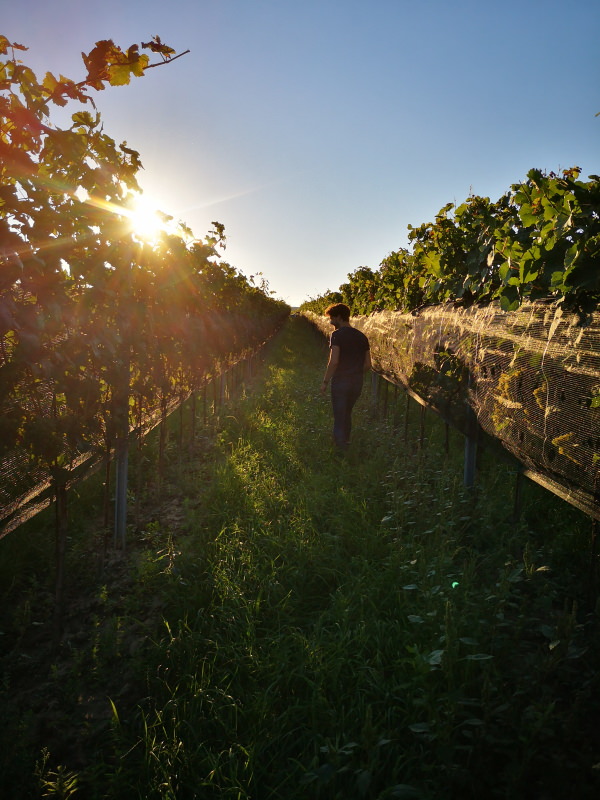
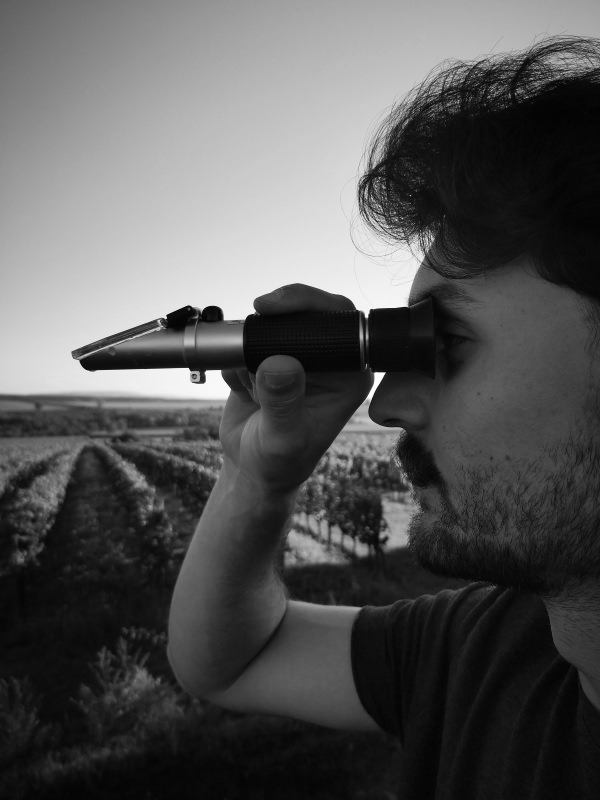
Autumn
September 16th: Sun is shinging and temperatures are moderate, we get to work with our harvest shears. Traditionally, we start with our Muskat Ottonel and proceed with picking for the base wine of our sparkling the next day. Already the first musts flowing down the press show the fruit intensity of the vintage. We move on to the Veltliner harvest. Acidity is fresh, sugar levels are only rising slowly due to the weather. This is "Oldschool Austria". It quickly becomes clear that this will be a very small harvest. The rain takes its toll. Sadly we have to cut some of the fruit to the ground after an intensive year in the vineyards. Quality has its price. We only want to put the best possible grape material into the press. It is interesting that this year the robust Veltliner seems to be more affected by the rain than Riesling. Likely because of the fantastic water-storing potential of our loess and loam soils on which the vines mostly grow (an advantage in dry years). Our Rieslings grow on rocky terraces and have slightly thicker skins, which shows in the health of the grapes. Again and again harvest hast to be interrupted due to rainfalls. At the beginning of October we already picked most vineyards for our basic qualities, as well as a large part of the Pinot family. We continoue with our single-vineyard wines: Thal, Käferberg, Heiligenstein and Kogelberg are all brought home by mid-October.
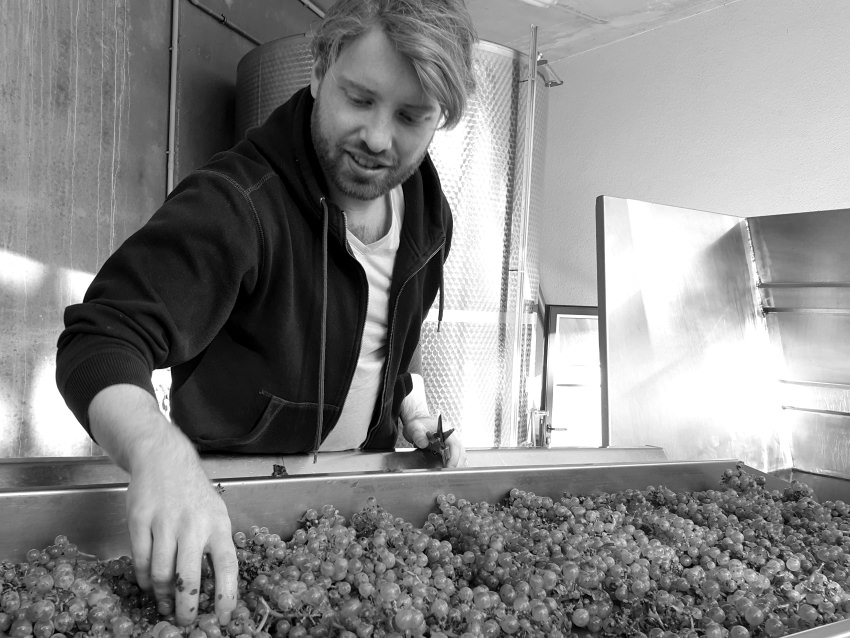
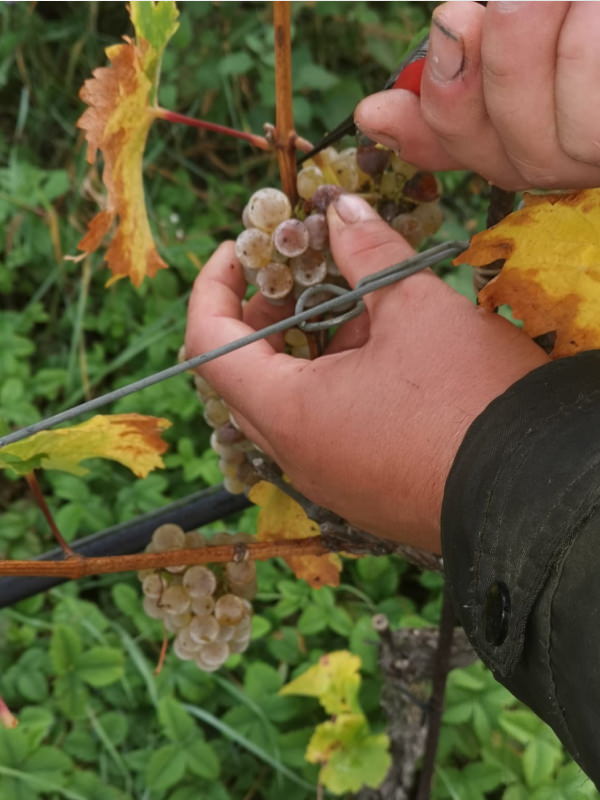
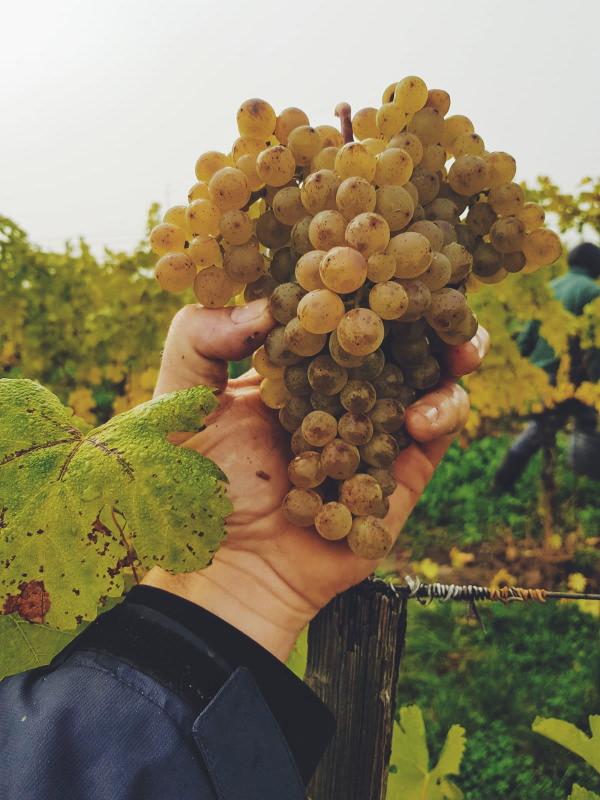

Together with our experienced team we tirelessly select the golden grapes. The difficult harvest reminds us of 2010, mind you one of our favorite years of the last decade. Something that motivates us, despite the challenging circumstances! It has become very cold by now. The rotting-pressure drops and the health of the grapes remains reasonably stable over the coming weeks. By the end of October, we finally pick the grapes of Gaisberg, Steinhaus and Schenkenbichl. It seems that we are the only ones still harvesting in Kamptal. Well, we take our time, it has been sunny and freezing cold in Langenlois for a few days already. The aromas become more concentrated from day to day, the musts denser and sweeter. It's Maximum time! Finally, on November 6th, we finish our harvest with the last delicious grapes for Riesling Maximum, while enjoying the beautiful sunshine. At this point in time, almost 2 months after we began the harvest, the first musts have already finished fermentation. After such a challenging harvest, the tasty & cloudy wines give us even greater pleasure. Elegant lightness with wonderful fruit abundance, classic Austrian. All efforts were definitely worth it. As always, time will do the rest. We look forward to sharing the results of our work with you. Spring can come (and Corona can leave)! 😉
